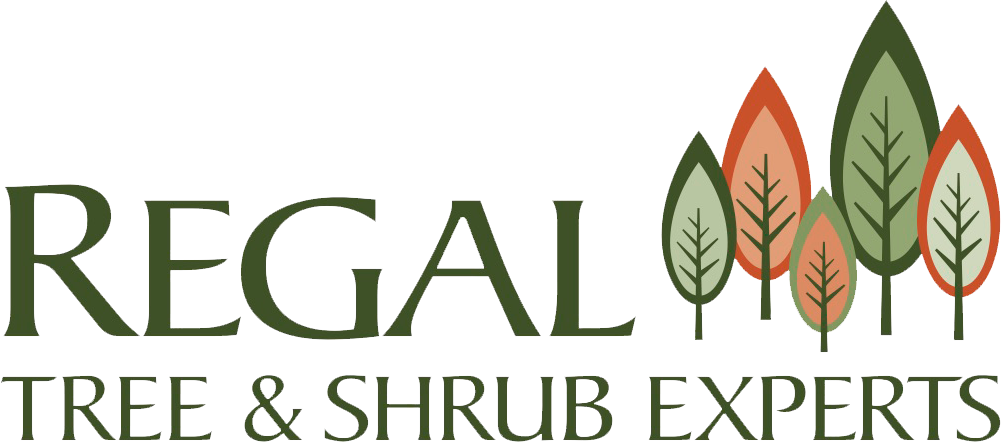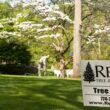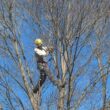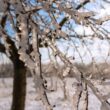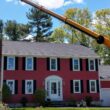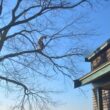Trees bring beauty and character to your property, but a hazardous tree can quickly turn into a serious threat to your home and loved ones. Recognizing the warning signs early gives you the chance to address issues before they become dangerous. Keep an eye out for these eight signs with your Greater South Easton trees.
Key Takeaways
- A tree becomes hazardous when it shows signs like leaning, cracks, or decay that make it more likely to fall or break.
- A tree is only considered hazardous if it poses a risk to people or property – “no target, no hazard.”
- Watch for signs like dead branches, exposed roots, or included bark that can weaken a tree and increase the chances of failure.
- Getting a professional arborist to inspect your tree is the best way to figure out whether it can be saved or needs to come down.
- Addressing a hazardous tree now can save you from expensive repairs and keep your home and family safe.
What Is a Hazardous Tree?
Before looking at the signs of a hazardous tree, we need to define what exactly constitutes one. While it might seem simple, there are two primary factors we look at to determine if we classify a tree as hazardous:
- Danger: A hazardous tree must present a threat of imminent failure. While any tree can fail at any time, a hazardous tree displays symptoms that make it more prone to failure. Tree failure can range from branches falling to the entire tree uprooting.
- Target: We have a saying in the tree service industry: “No target, no hazard.” To classify a tree as hazardous, there needs to be something for it to fall into or damage. A dead tree in an open field isn’t a hazard, but that same tree in a small backyard next to a house in Easton is.
8 Signs of a Hazardous Tree in Greater South Easton
There are several signs to look for to determine if a tree may be hazardous. Some of these signs are rather obvious, while others may require a keen eye to spot.
WARNING: Determining whether a tree is a hazard or not is best left to professionals. It’s better to consult with an ISA Certified Arborist and have them determine your tree’s health.
1. Tree Is Leaning
Trees may develop a slight natural lean over time but should never be more than 10-15 degrees from vertical. Once they reach that threshold, they are much more likely to fail during a storm.
Removing a leaning tree is often the best course of action, especially when it puts people or property at risk.
PRO TIP: Removal is not always the only option for leaning trees. If a tree is small enough and the lean is not too severe, you may be able to correct the lean before the tree becomes a hazard.
2. Dead Patches in the Canopy
Dead patches in your tree’s canopy could point to numerous issues, including attacks from invasive insects or heat stress, but it is never a good sign. When you notice dead patches in your tree’s canopy, especially when they are all over the tree, it may be time to have an arborist examine it.
The arborist will diagnose what is wrong with your tree and make a recommendation on how to best care for it. They may suggest removing the tree for safety reasons or offer tree preservation strategies to save the tree.
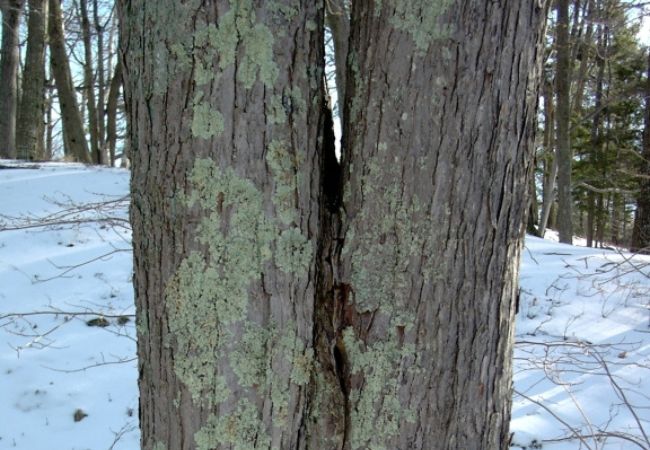
Photo courtesy of Joseph OBrien, USDA Forest Service, Bugwood.org.
3. Tree Has Multiple Trunks
Two is not better than one when it comes to tree trunks. Ideally, your tree should have a single primary trunk straight up from the ground. When a tree has multiple trunks, the point where they meet is at risk of splitting during a storm.
Proper pruning when a tree is young can prevent the development of multiple trunks by encouraging one central leader. However, if the tree is mature, cabling and bracing may strengthen your tree and lower the risk of failure.
4. The Tree Is Dead
Dead trees are more prone to breaking or uprooting, as they don’t have the same structural integrity and ability to securely anchor into the ground as healthy trees. If an arborist determines your tree is dead, the only thing you can do for it is have it removed.
PRO TIP: If you have a large enough yard, it is actually possible to keep a dead tree standing. Dead trees act as shelter for small mammals and birds. If the tree doesn’t have a target, it’s your choice if you want to take it down.
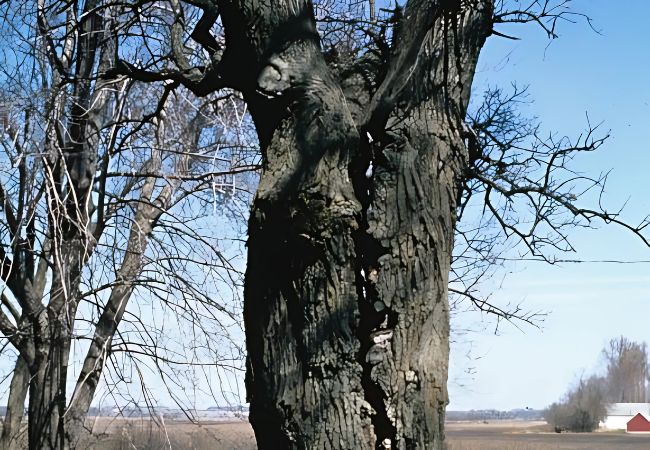
Photo courtesy of Peter Bedker, Bugwood.org.
5. Noticeable Cracks in the Bark
A crack in the bark that extends to the interior wood is often a sign of a dead or dying tree. Cracks can happen due to decay or external damage. They are also more common in trees with multiple trunks. When you see split wood in the crack, have an arborist examine the crack as soon as possible to recommend if they can save your tree.
6. Signs of Decay
Decay weakens trees, making them less able to withstand storms and other challenges. It often starts inside the tree and works its way out. While decay isn’t ideal, it doesn’t always mean the tree is an immediate hazard.
The real concern is when decay reduces the tree’s structural integrity, especially if combined with weak branch unions or split trunks. These already vulnerable areas become more likely to break.
You can often spot decay by looking for visible cavities or other signs on the tree. An arborist may also use a mallet to tap the tree and listen for hollow sounds, which indicate decay.
For a more professional approach, have an arborist perform sonic tomography to easily identify internal issues with your trees.
PRO TIP: Want to learn more about how Regal Tree uses sonic tomography? Read our previous blog on this game-changer.
7. Exposed Roots
Roots serve two main functions for trees: they provide nutrients and water, and they anchor the tree to the ground. Trees may develop exposed roots due to compacted soil or improper planting. Exposed and shallow roots cannot properly anchor a tree to the ground, leaving it more prone to uprooting.
8. Included Bark
Included bark occurs when two stems grow too close to each other, leading to bark growing between them. This bark does not support the stems and will leave the branch unions very weak. When a nor’easter or other storm hits, these branches are more likely to break off and cause damage.
Regular tree pruning and inspections can limit the risk from included bark.
Frequently Asked Questions About Hazardous Trees
What should I do when I think I have a dangerous tree?
Have an arborist inspect your tree if you believe your tree may be dangerous or putting your property at risk. They have the necessary expertise to determine what is wrong with your tree and if it poses a hazard to your property.
Can an arborist save my hazardous trees?
It is possible for an arborist to save some hazardous trees, depending on the problems they face. Some methods they may use to reduce the danger of a tree include:
- Cabling and bracing
- Soil aeration
- Pruning
- Insect and disease treatment
What tree species are prone to becoming hazardous?
Some tree species most at risk of becoming hazardous in Greater South Easton include:
- Silver maple
- Ash
- Willows
- Bradford pear
- Eastern white pine

Regal Tree Can Help Identify Hazardous Trees and Remove Them
A hazardous tree isn’t just an inconvenience – it’s a real threat to your property and loved ones. Waiting until the next storm could lead to expensive damage or even personal injury. Whether the tree can be saved or needs to come down, addressing the problem now is the best move.
The team at Regal Tree has the skills and equipment to properly diagnose what’s wrong with your tree and provide objective advice. We can handle everything from removing the tree to using state-of-the-art technology to save it. Call us today at 774-719-2450 or request a quote online.
